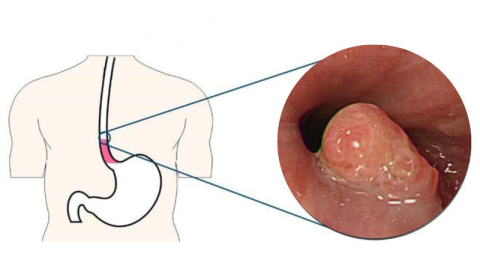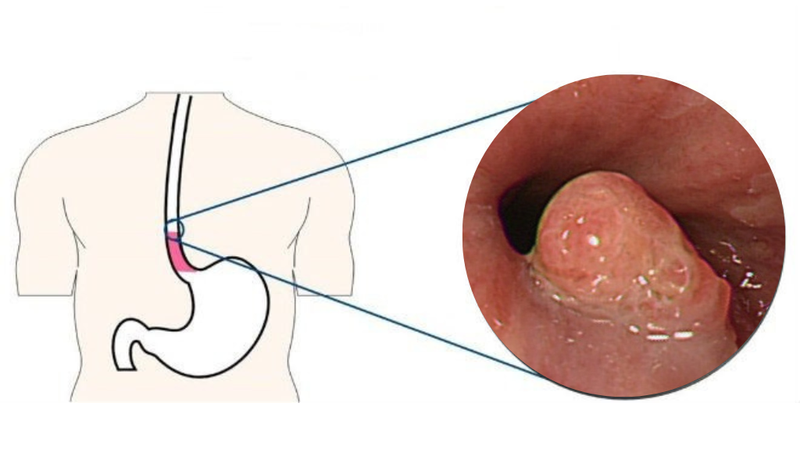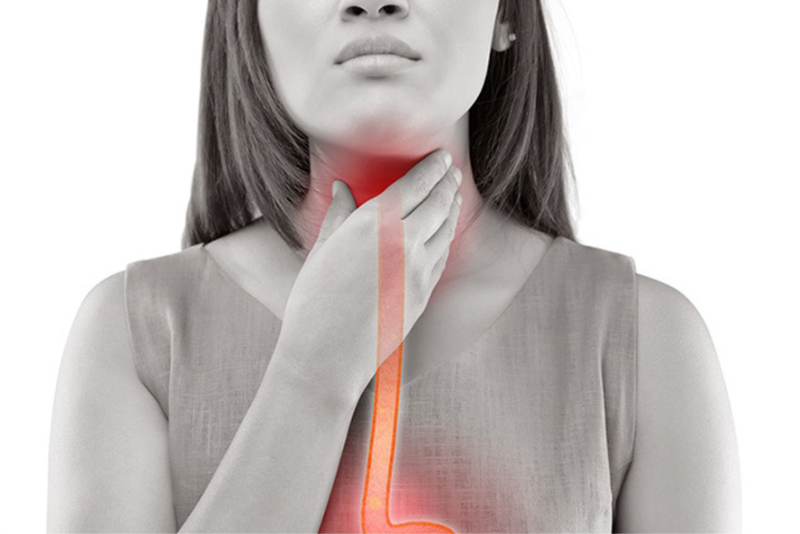What are the causes of esophageal papillomatosis? Ways to treat and prevent esophageal papillomatosis

Esophageal papillomas are often discovered incidentally by endoscopy when they are small. When detected, depending on the size, the doctors will have different treatment. What causes esophageal papillomatosis? Can the disease be treated?
Esophageal papillomatosis is a rare epithelial tumor that is usually asymptomatic but may present with pus and epigastric discomfort and may be accompanied by dysphagia. To determine whether this is a benign or malignant tumor or to distinguish it from other similar lesions, biopsies can be performed. However, based on endoscopic images such as clear tumor margins, abnormal blood vessels on the tumor, ulcers, etc., it is possible to make a preliminary diagnosis. Practice proves that esophageal papillomas are usually benign and rarely develop into cancer. What causes esophageal papillomatosis?
How to recognize esophageal papillomatosis?
What are the symptoms of esophageal papillomatosis? Esophageal papillomatosis usually has no obvious clinical manifestations. Normally, patients do not intentionally detect papillomas, but most of the disease is discovered incidentally during endoscopic examination.
Usually these papillomas are less than 5mm in size, have no peduncle, and have a milky , milky appearance that is best identified by biopsy. However, they can also present with a wide range and irregular surface. Most papillomas are located in the lower third of the esophagus.
 Endoscopic image of esophageal papilloma
Endoscopic image of esophageal papilloma
What are the causes of esophageal papillomatosis?
The cause of esophageal papillomatosis has not been definitively established, but several etiological factors have been proposed, such as chemical factors, mechanical factors, and infection with HPV.
Chemical factors are related to gastroesophageal reflux disease (GERD). This explains why about a quarter of esophageal papillomas appear in the lower third of the esophagus, a place that is vulnerable to irritation from acid reflux. Regarding the mechanical factor, it is caused by the irritation of the esophagus when the gastric tube is inserted, the previous surgeries involving the esophagus, the stomach or it is also related to the syndromes such as: Goltz - Gorlin, Angioma serpaginosum and Cowden.
 Gastroesophageal reflux may be the cause of esophageal papillomatosis
Gastroesophageal reflux may be the cause of esophageal papillomatosis
Human papillomavirus (HPV) types 6 and 11 have been observed in the presence of esophageal papillomas. Although the role of HPV in causing esophageal papillomatosis is still controversial and there is no consensus, but according to a research observation indicating that 427 cases of esophageal papilloma are eligible for the study, the rate detection of the presence of HPV was 30.9% (132/427). Furthermore, esophageal papillomatosis can occur in children, regardless of male.
However, studies conducted in Asian countries indicate that the incidence is higher in women. There is evidence that HPV is associated with laryngeal cancer and cervical cancer , but the association with esophageal cancer is unclear.
There are studies showing lesions in esophageal papilloma associated with high-risk HPV serotypes, but there are also studies showing low-risk HPV serotypes. But these results are not accepted because of differences in methods and geographical regions.
Can esophageal papillomatosis be treated?
Is there a lot of anxiety when a patient discovers esophageal papillomatosis? But esophageal papillomas are mostly benign, so people shouldn't be too worried. When found into the esophageal papilloma, it is not necessary to do the procedure to remove it. Usually if the tumor size is < 1cm="" the="" doctor="" will="" usually="" only="" determined="" examined="" determined="" period= "" after="" 3="" -="" 6="" month.
There are also some questions that "will the esophageal papillomatosis come back after surgery?". The answer to this question is that whether or not it is removed, papillomas can recur or appear elsewhere. But not because of that misunderstanding that surgery makes papillomas easier to grow, the patient needs to listen carefully to the advice and explanation from the treating doctor as well as to adhere to the treatment.
Some measures to prevent the risk of diseases of the esophagus
Not only esophageal papilloma in particular but to prevent diseases in general, we must maintain a good health. SignsSymptomsList offers some advice:
- Exercise regularly. With only simple exercises of about 30 minutes in the morning, regularly every day gives you many unimaginable benefits.
- A healthy, nutritious diet. Increase the addition of vegetables, tubers and fruits in the diet because these are foods rich in vitamins, fiber and antioxidant compounds to prevent cancer.
- Quit smoking, limit alcohol. When it comes to tobacco, alcohol, and beer, the benefits are not visible but only harmful, so anyone with this bad habit should stop, for the health of both themselves and the community.
- Do not abuse drugs, take drugs under a doctor's prescription because there are some drugs that increase the risk of gastroesophageal reflux disease - oesophagitis such as antibiotics, antihypertensive drugs, pain relievers...
Clean vegetables, tubers and fruits - healthy food
Thus, it can be seen that the cause of esophageal papillomatosis is most likely due to lesions caused by gastroesophageal reflux disease, gastric tube placement or HPV. When found, it is necessary to listen to the doctor's advice and not be too worried because most are benign and can be removed.
Hopefully, this article has helped you gain an understanding of the causes of esophageal papillomatosis and how to prevent it. SignsSymptomsList is always ready to accompany you and wish you good health. Hope SignsSymptomsList will continue to receive the support of readers in the future!